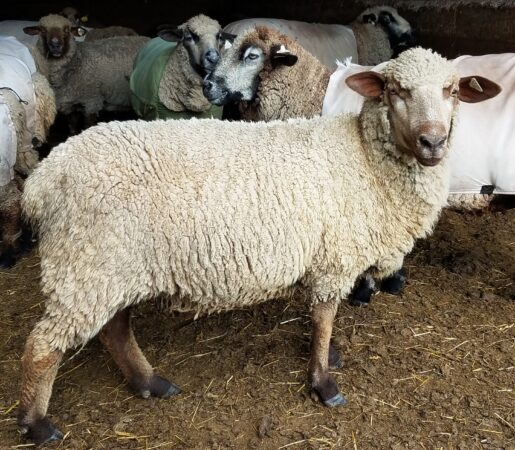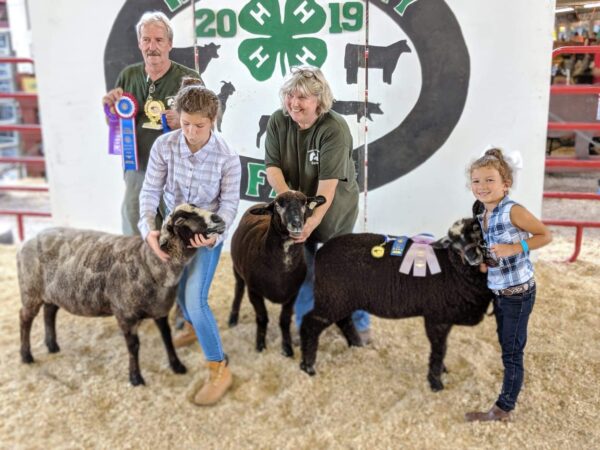Exactly what IS a Romeldale CVM sheep and where did they come from?
Romeldale CVM sheep are a multi-purpose sheep breed used for both their fine wool and mild tasting meat. Romeldale sheep are white and natural colors; their CVM derivatives come in a wide range of natural colors. Romeldale sheep are a composite sheep breed, developed in Gerber, California in the early 1900s. To create this breed A.T. Spencer crossed New Zealand Marsh Romney rams over Rambouillet ewes. J.K. Sexton and his family further established the Romeldale sheep breed, and it was within their flock that the first CVM (California Variegated Mutant) sheep were born. In subsequent years, Glen Eidman, a partner of the Sexton family, developed the CVM derivative of the Romeldale sheep. Romeldale CVM sheep are long-lived, have docile and alert personalities, and are an intelligent sheep breed.

Breed Description
Romeldale CVM sheep provide benefits for backyard flocks through range flocks:
- Easy lambing with a high rate of twins
- Excellent mothering skills, attentive, and care for their young with ease
- Fast growing lambs, strong heavy bodies, and favored for a mild flavored meat
- Adult ewes average 140-190 pounds; adult rams average 200-250 pounds
- Hardy sheep with strong hooves as well as parasite resistance and resilience
- Quiet temperament and the ability to flock together make them a joy to shepherd
- Wool colors for this fine fiber come in a rainbow of whites, grays, browns, and blacks
- Their wool has a micron of 20-25 and a staple length of 3-6″
- Can be polled or horned

Understanding the Colors of Romeldale CVM Sheep
CVM: Romeldale CVM sheep have badger markings on the face, a dark muzzle, striping down the sides of the face, dark underbelly, dark legs with black and/or brown and may have white markings, dark chest from the chin all the way to the underbelly, a dark area around the tail, and are lighter bodied with a clear bifurcation (separation) in color between the dorsal (back) and ventral (abdomen) portions of the body.
WHITE: Romeldale sheep are traditionally white, with black, brown, or pink pigment only on their face, ears, and legs.
NATURAL COLOR: Natural Colored Romeldale sheep include all other sheep that are
solid or patterned natural colors ranging from white to brown or black, and they may or may not have spotting or striping.
To learn more about what makes up a Romeldale CVM sheep, click to read the:



